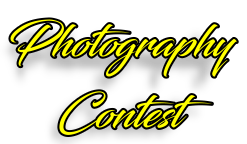How to Shoot Night Sky Photography
Camera:
You will need a camera to control your ISO, shutter speed, and aperture manually.
Lens:
A fast, wide-angle lens of 1.4 – 2.8 is ideal. If you use a 3.5 or higher (slower lens), you will increase the ISO. The higher the ISO, the more grain or digital noise or grain will appear in your photos. Nikon’s 28mm f/1.8G or Canon’s 28mm f/1.8 are good choices if you go shopping for your night photography trip.
Tripod:
A good, sturdy tripod is essential for night photography. If it gets windy, you will need a sturdy one, and we never know what Mother Nature will bring us while we are out there. Keep that in mind when you buy one to go in your suitcase if you are going on a plane. It should be sturdy enough to withstand the wind but small enough to fit in your bag.
Sky Map:
These are good for shooting Milky Way Photography. Sky Guide is available through the iTunes Store for $1.99. It has a 5 out of 5-star rating on both the current (3.2) version (1200+ ratings) and all previous versions (8600+ ratings). Android Version? Sky Guide is not currently available as an Android app. The closest thing I can suggest is Sky Safari ($2.99). This light pollution map: light pollution map
Flashlight:
Our choice is the Coast brand for flashlights. The ideal flashlight will have high lumens, and you can zoom in and out on the light emitting from the flashlight. I like a small stream of light, not a wide amount of light. I can be specific about what I want to paint with light. Get the HP7, PX45, or the G50. Ideally, go with the HP7 if you can.
Moon Phaze Map:
The best time to do Milky Way photography is during a new moon; you want to be in the darkest area possible. The moon can be your friend if you do night sky photography without the Milky Way.
Remote Shutter Release:
When painting with light and over a 30-second exposure, you must have a shutter release to use your bulb mode. When exposing your pictures in general, you can use the remote release, so you do not use your hand to press the shutter button and make the camera move even a little bit. Without one quickly, you can use your 2-second timer.










 Photography, Lessons, Workshops and Classes.
Photography, Lessons, Workshops and Classes.
